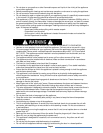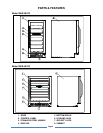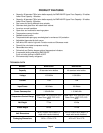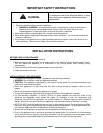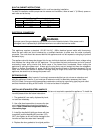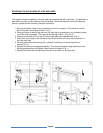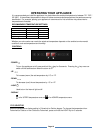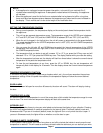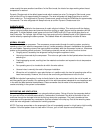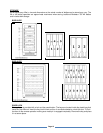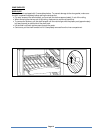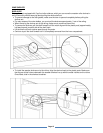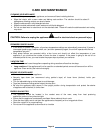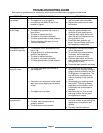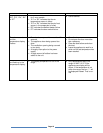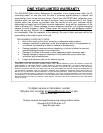
Page 17
TROUBLESHOOTING GUIDE
Most common problems can be resolved by referring to the troubleshooting suggestions listed below.
PROBLEM
POSSIBLE CAUSE
SOLUTIONS
The appliance does
not operate.
There is a power failure.
The appliance is not plugged in.
A house fuse has blown or the circuit
breaker is tripped.
Ensure the appliance is plugged in
and the power outlet has power.
Replace the broken fuse or reset
the breaker.
The appliance is not
cold enough.
The set temperature too high.
The appliance is placed too close to a
heat source.
The door is opened too often.
The door is not closed completely.
The door gasket does not seal properly.
The front bottom grille does not have
sufficient ventilation.
Adjust the set temperature
Keep the appliance away from
sunshine or other heat sources.
Close the door tightly and do not
open the door too frequently or for
a long period of time.
Ensure the door gasket is not
loose. The front bottom grille must
be completely unobstructed.
The appliance turns
on and off frequently.
The ambient (room) temperature is too
low or high.
A large amount of contents has been
added to the appliance.
The door is opened too often.
The door is not closed completely.
The door gasket does not seal properly.
Decrease or increase the ambient
(room) temperature.
To minimize internal temperature
fluctuation, do not add large
amount of contents at once.
Close the door tightly and do not
open the door too frequently or for
a long period of time.
Ensure the door gasket is not loose.
The appliance makes
too much noise.
The noise may come from the flow of
the refrigerant/
Contraction and expansion of the inside
walls may cause popping and crackling
noises.
The appliance is not level.
It is normal that as each cooling
cycle ends, you may hear rattling or
gurgling sounds caused by the flow
of refrigerant in the appliance. The
high efficiency compressor may
make a pulsating or high pitched
sound.
Some popping or cracking noises
are normal. They are caused by
expansion and contraction of the
inside walls due to temperature
changes.
Make sure the unit is on a hard
and level surface. Do not place
the appliance on carpet.
The door does not
close properly.
The appliance is not level.
The door was reversed and not
properly installed.
The shelves are out of position.
Make sure the cooler is on a hard
and level surface. Avoid placing the
appliance on a carpeted or soft
surface.
Correctly install the shelves.



